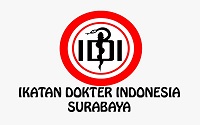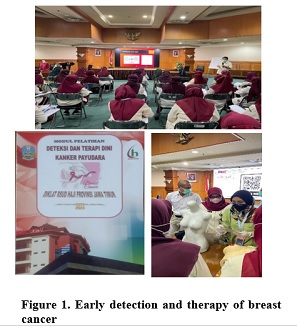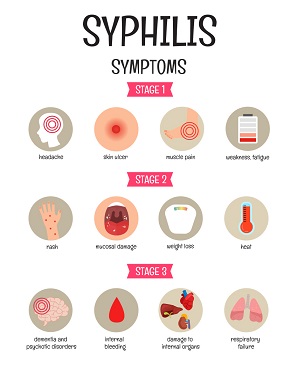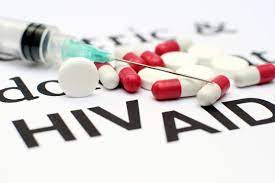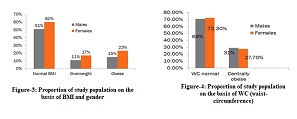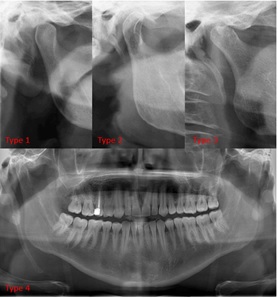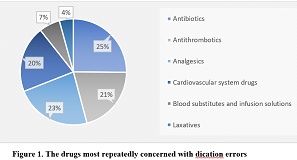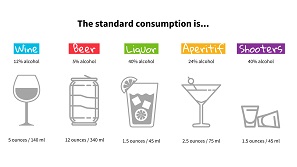Profile of Syphilis Compliance and Success of Therapy at Dermatology and Venereology Clinic RSUD Dr. Saiful Anwar Malang: A Descriptive Study

Syphilis is a chronic progressive sexually transmitted infection, that causes a life-threatening condition if left untreated. In lower-middle-income countries, the burden of disease might appear to be lower due to a lack of reports. This study aimed to report the epidemiological profile, the profile of compliance, and the success of therapy of syphilis at the Dermatology and Venereology Outpatient Clinic in RSUD dr. Saiful Anwar Malang, Indonesia. This study used a descriptive approach using secondary data from the medical records of newly diagnosed syphilis patients at Dermatology and Venereology Clinic RSUD dr. Saiful Anwar Malang from January 2021 - December 2021. Sample collection was using a total sampling technique. Eighteen medical records met the inclusion criteria. The majority of samples were men (77.8%), aged 17-25 years (44.4%) and 26-35 years (44.4%), had a high school education (55.6%), HIV positive (50%) and HIV negative (50%). All 18 patients got intramuscular injections of a single 2.4 million U or 7.2 million U Benzathine Penicillin G according to the syphilis stage. It was found that eight patients (44.4%) had a successful therapy, two patients (11.2%), experienced failure, and the remaining eight patients (44.4%) were unknown due to loss of follow-up. Several factors are associated with better patient compliance including older age, higher educational level, type of the disease, and lower complexity of treatment schedules. Overall, therapeutic compliance of syphilis patients is good, but monitoring compliance needs to be improved. Benzathine Penicillin G remains the drug of choice for syphilis and has a high success rate.
INTRODUCTION
Syphilis is a chronic progressive sexually transmitted infection caused by the bacteriumTreponema pallidum. Syphilis can be classified into active clinical spectrums (primary, secondary, tertiary) and an asymptomatic period called latency1,212. This disease will develop into various stages, causing life-threatening complications if left untreated33.
Although the incidence of syphilis declined significantly worldwide and managed to reach its lowest point five decades after the discovery of penicillin in the mid-1940s, the number of cases in the United States and Europe reported to the Centers for Disease Control and Prevention (CDC) increased by 81% from 2014 to 20184,545. In 2020, there were 7.1 million new cases of syphilis globally in people aged 15-49 years33. In Southeast Asia, the trend of syphilis is also increasing with a total of 350,000 cases22. According to the Indonesian Ministry of Health in 2021 there were 13,505 cases of early syphilis and 3,775 cases of stage syphilis66.
In lower-middle-income countries, the burden of disease might appear to be lower due to a lack of reports77. Therefore this study aimed to report the epidemiological profile, the level of compliance, and the success of therapy of syphilis at the Dermatology and Venereology Outpatient Clinic in RSUD dr. Saiful Anwar Malang, Indonesia from January 2021 to December 2021.
MATERIALS AND METHOD
This study used a descriptive approach to secondary data from the medical records of syphilis patients at the Dermatology and Venereology Clinic RSUD dr. Saiful Anwar Malang from January 2021 - December 2021. Sample collection was using a total sampling technique which included all patients who met the inclusion and exclusion criteria. The inclusion criteria were newly diagnosed syphilis patients at Dermatology and Venereology Clinic RSUD dr. Saiful Anwar Malang from January 2021 - December 2021. The diagnosis of syphilis was confirmed by laboratory examination; the finding ofT. pallidumin dark field examination or a reactive (nontreponemal & treponemal) syphilis serological test. The exclusion criteria were syphilis patients who received syphilis management outside the Dermatology and Venereology Clinic RSUD dr. Saiful Anwar Malang. The parameters studied were gender, age, education, occupation, syphilis stage, HIV infection status, CD4+ level, therapeutic modalities, therapeutic compliance, monitoring compliance, and success of therapy. Therapeutic compliance is the patient's behavior to seek treatment regularly according to a set time. Monitoring compliance is the patient's behavior to come for re-evaluation according to a set time. Successful treatment of syphilis was defined as a fourfold decrease in nontreponemal titer (VDRL) within 3–24 months of syphilis therapy, no persistence/recurrence of symptoms, nor a fourfold increase in titer for >2 weeks1,8. The data obtained were presented in numbers and percentages descriptively, and subjected to univariate analysis using the Statistical Package for the Social Sciences (SPSS ver. 21, IBM®) application. The research protocol has been approved by the Medical Research Ethics Committee of RSUD Dr. Saiful Anwar Malang (Approval number: 070/036/102.7/IKKK/09/2022, Date: September 28th, 2022 ).
RESULTS
There were 18 medical records of syphilis at the Dermatology and Venereology Clinic RSUD dr. Saiful Anwar Malang from January 2021 - December 2021 which met the inclusion and exclusion criteria.
According to Table 1, the majority of samples were men (77.8%), HIV positive (50%), aged 17-25 years (44.4%) and 26-35 years (44.4%), had a high school education (55.6%), and worked in the private sector (44.4%).
Parameters | HIV positive (n,%) | HIV negative (n,%) | Total |
Gender | |||
Male | 9 (100) | 5 (55.6) | 14 (77.8) |
Female | 0 (0) | 4 (44.4) | 4 (22.2) |
Age (years old) | |||
17 – 25 | 4 (44.4) | 4 (44.4) | 8 (44.4) |
26 – 35 | 5 (55.6) | 2 (22.2) | 8 (44.4) |
36 – 45 | 0 (0) | 3 (33.3) | 2 (11.2) |
Education | |||
Elementary School | 0 (0) | 1 (11.1) | 1 (5.6) |
Junior High School | 0 (0) | 0 (0) | 0 (0) |
Senior High School | 5 (55.6) | 5 (55.6) | 10 (55.6) |
Higher Education | 2 (22.2) | 1 (11.1) | 3 (16.7) |
Unknown | 2 (22.2) | 2 (22.2) | 4 (22.7) |
Occupation | |||
Student | 3 (33.3) | 3 (33.3) | 6 (33.3) |
Private Sector | 3 (33.3) | 5 (55.6) | 8 (44.4) |
Civil Servant | 1 (11.1) | 0 (0) | 1 (5.6) |
Entrepreneur | 0 (0) | 1 (11.1) | 1 (5.6) |
Unemployed | 2 (22.2) | 0 (0) | 2 (11.1) |
Table 2 shows that the majority of syphilis patients were diagnosed at the secondary stage (50%). All 18 patients got intramuscular Benzathine Penicillin G according to the stage. The level of CD4+ of those who were tested was mostly <200/µL (27.7%).
All 15 (100%) earlysyphilis patients underwent a Benzathine Penicillin G 2.4 million U single dose intramuscular injection and all three (100%) late syphilis (tertiary and late latent) patients underwent a complete series of IM Benzathine Penicillin G 2.4 million U once a week for three consecutive weeks (shown in Table 3).
Stage | Frequency(n) | Percentage (%) |
Primary | 3 | 16.7 |
Secondary | 9 | 50.0 |
Tertiary | 0 | 0 |
Early Latent | 3 | 16.7 |
Late Latent | 3 | 16.7 |
Total | 18 | 100 |
Therapeutic modalities | ||
IM Benzathine Penicillin G (2.4 million U) | 15 | 83.3 |
IM Benzathine Penicillin G (7.2 million U) | 3 | 16.7 |
PO Doxycycline (2 x 100 mg) | 0 | 0 |
Others | 0 | 0 |
Total | 18 | 100 |
CD4+ level | ||
< 200/µL | 5 | 27.7 |
200 – 349/µL | 1 | 5.6 |
350 – 499/µL | 0 | 0 |
Tuddenham SA, Zenilman JM. Chapter 170: Syphilis. In: Kang S, Amagai M, Bruckner AK, Enk AH, Margolis DJ, McMichael AJ, et al., editors. Fitzpatrick’s Dermatology. 9th ed. McGraw Hill Education; 2019. p. 3145–72.
Lukehart SA. 36: Biology of Treponemes. In: Holmes KK, Sparling PF, Stamm WE, Piot P, Wasserheit JN, Corey L, et al., editors. Sexually Transmitted Diseases. 4th ed. McGraw Hill Education; 2008. p. 647–59.
World Health Organization. Global health sector strategies on, respectively, HIV, viral hepatitis and sexually transmitted infections for the period 2022-2030. 2022.
Pinchera B, et al. Epidemiological and clinical features of syphilis in the 21st century: A seven-year observational retrospective study of outpatients. Clinical Epidemiology and Global Health. 2022; 16: 101100.
Ghanem KG, Ram S, Rice PA. The modern epidemic of syphilis. New England Journal of Medicine. 2020; 382.9: 845-854.
Kementerian Kesehatan Republik Indonesia. Laporan HIV-AIDS & IMS triwulan IV. 2021.
Kojima N, Klausner JD. An Update on the Global Epidemiology of Syphilis. Curr Epidemiol Rep. 2018 Mar;5(1):24-38.
Hazra, Aniruddha, Maggie W. Collison, and Andrew M. Davis. CDC sexually transmitted infections treatment guidelines, 2021. JAMA. 2022: 870-871.
Li HY, Qu HQ, Wang XM, Zhang YJ, Zhang FR. A meta-analysis of the efficacy of azithromycin and benzathine penicillin in early syphilis. Tropical Journal of Pharmaceutical Research. 2018 Mar 7;17(2):345-50.
Janier M, Unemo M, Dupin N, Tiplica GS, Potočnik M, Patel R. 2020 European guideline on the management of syphilis. Journal of the European Academy of Dermatology and Venereology. 2021 Mar;35(3):574-88.
Krot K, Sousa JP. Factors impacting on patient compliance with medical advice: empirical study. Engineering Management in Production and Services. 2017: 92.
Theofilou P, Florou K, Tsironi M. A cross sectional study to evaluate medication compliance among patients with hypertension. Stem Cell Res Int. 2022;5(2):114-120.
Sparling PF, Swartz MN, Musher DM, Healy BP. Clinical Manifestations of Syphilis. In: Holmes KK, Sparling PF, Stamm WE, Piot P, Wasserheit JN, Corey L, et al., editors. Sexually Transmitted Diseases. 4th ed. McGraw Hill Education; 2008. p. 661–84.
Fernandes A, Ervianti E. Secondary Syphilis in Human Immunodeficiency Virus (HIV)-Infected Men Who Have Sex with Men (MSM): A Case Report. Berk Ilmu Kesehat Kulit dan Kelamin. 2020;32(1):75.
Hasihun FD. Analysis Of Knowledge Levels with Compliance with Antibiotic Use. Journal of Applied Nursing and Health. 2020 Dec 30;2(2):67-71.
Kane BG, Guillaume AW, Evans EM, Goyke TE, Eygnor JK, Semler L, Dusza SW, Greenberg MR. Gender differences in CDC guideline compliance for STIs in emergency departments. Western Journal of Emergency Medicine. 2017 Apr;18(3):390.
Nari J, Shaluhiyah Z, Prabamurti PN. Analisis faktor-faktor yang berhubungan dengan kejadian IMS pada remaja di klinik IMS Puskesmas Rijali dan Passo Kota Ambon. Jurnal Promosi Kesehatan Indonesia. 2015;10(2):131–43.
Refugio ON, Klausner JD. Syphilis incidence in men who have sex with men with human immunodeficiency virus comorbidity and the importance of integrating sexually transmitted infection prevention into HIV care. Expert Rev Anti Infect Ther [Internet]. 2018;16(4):321–31. Available from: https://doi.org/10.1080/14787210. 2018.1446828
Karadag AS, Elmas ÖF, Altunay İK. Cutaneous manifestations associated with HIV infections: A great imitator. Clin Dermatol. 2020;38(2):160–75.
Hook EW III, Behets F, Van Damme K, et al. A phase III equivalence trial of azithromycin vs benzathine penicillin for treatment of early syphilis. J Infect Dis. 2010; 201(11):1729–1735.
Clement ME, Okeke NL, Hicks CB. Treatment of syphilis: a systematic review. JAMA. 2014 Nov 12;312(18):1905-17.
Copyright (c) 2024 Intan Wasaputri Donoseputro, Lita Setyowatie

This work is licensed under a Creative Commons Attribution-ShareAlike 4.0 International License.
- The journal allows the author to hold the copyright of the article without restrictions.
- The journal allows the author(s) to retain publishing rights without restrictions.
- The legal formal aspect of journal publication accessibility refers to Creative Commons Attribution Share-Alike (CC BY-SA).
- The Creative Commons Attribution Share-Alike (CC BY-SA) license allows re-distribution and re-use of a licensed work on the conditions that the creator is appropriately credited and that any derivative work is made available under "the same, similar or a compatible license”. Other than the conditions mentioned above, the editorial board is not responsible for copyright violation.






